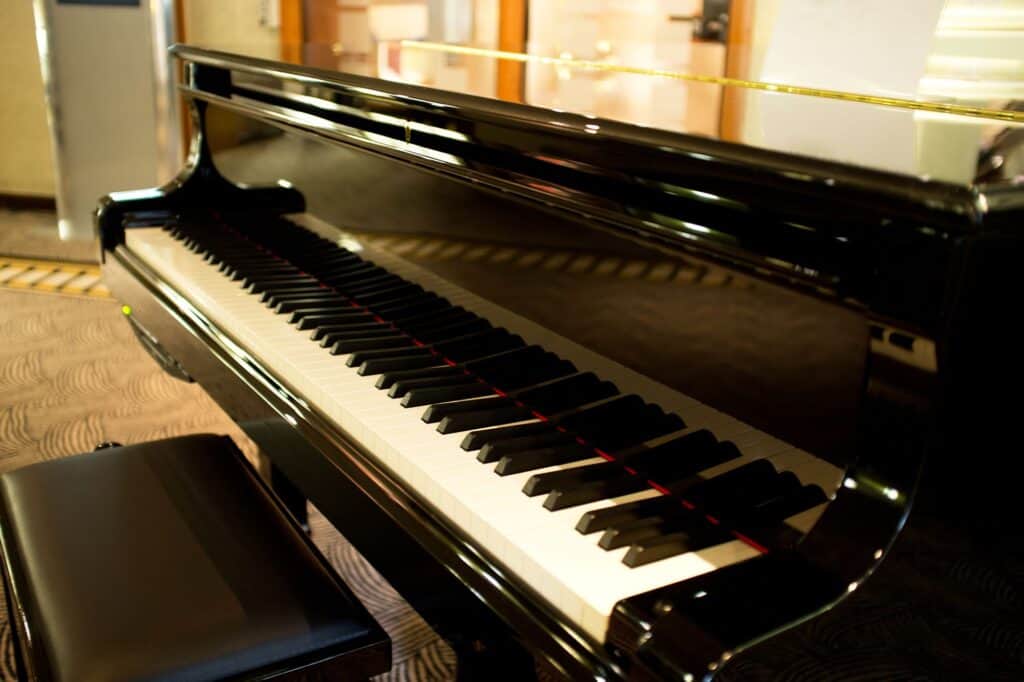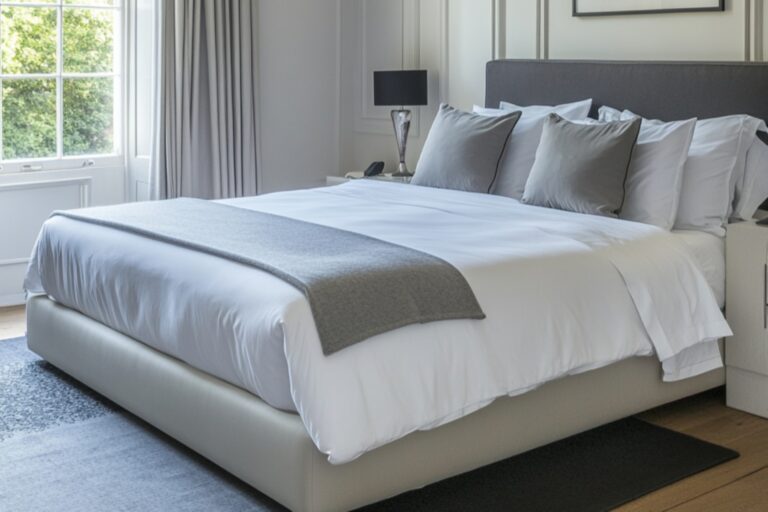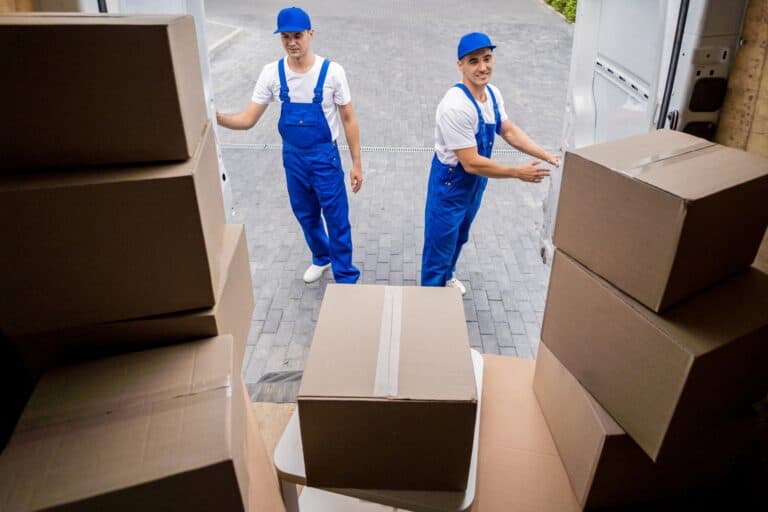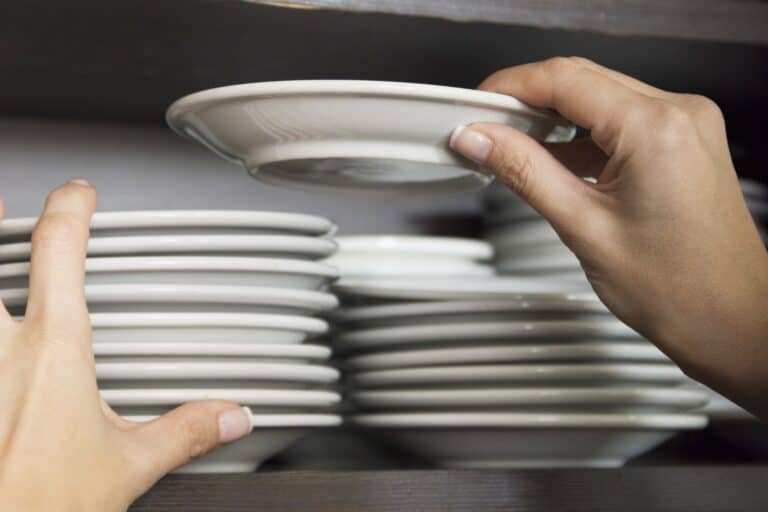Moving pianos and other large fragile objects doesn’t have to be overwhelming. These valuable items require careful planning and specific techniques to move safely. This guide covers everything you need to know, from essential packing materials to hiring professional movers in Harrow, ensuring your prized possessions reach their new home unscathed.
Key Takeaways
- Proper preparation, including measuring and planning the move route, is crucial for safely moving large fragile items like pianos.
- Using the right packing materials, such as moving blankets, bubble wrap, and securing with tape, is essential to protect valuable items during transit.
- Hiring professional movers can ensure the safe handling and transportation of large and delicate objects, given their specialised equipment and expertise.
A Step-by-Step Guide to Moving Pianos and Fragile Items with Ease
Moving can be a symphony of organised chaos, especially when it involves transporting something as grand and delicate as a piano. But fear not, for this guide is your conductor’s baton, leading you through the intricate dance of wrapping, packing, and moving your most treasured items. From your prized piano to the most breakable of heirlooms, we’re here to ensure they all arrive at their new home in pristine condition.
Let’s dive into the world of moving large, fragile objects, where every step is choreographed for perfection. You’ll learn the importance of preparation, discover the essential packing materials for safeguarding your valuables, and understand why professional movers can be the virtuosos you need for handling the heavy and delicate items. With this guide, you’ll be equipped to navigate the complexities of moving with confidence and finesse.
Preparing for the Move
The prelude to a seamless moving day is all in the preparation. Begin by sizing up the situation – measure your piano and chart its course from the old home to the new. Doorways, staircases, and narrow corridors can pose unexpected challenges, so it’s crucial to ensure a clear path before the big day. And remember, pianos aren’t just bulky; they’re complex instruments that may require the gentle touch of a piano mover to navigate those tight spaces.
Equipping yourself with the right tools is like tuning your instrument before a performance. You’ll need a piano dolly, furniture blankets, and straps – the ensemble of equipment that safeguards your piano during its journey. And if you’re facing the daunting stairs or simply want peace of mind, consider enlisting professional movers. They have the experience, the muscle, and, most importantly, the specialised gear to handle your piano safely, all the way to its new stage.
Essential Packing Materials
When it comes to packing fragile and valuable items, choosing the right materials is like selecting the perfect armour. You’ll want to surround your belongings with layers of protection – bubble wrap, packing peanuts, and packing paper are the knights in shining armour for your delicate items. To pack fragile items effectively, think of each cushioning layer as a protective note in a harmonious melody, safeguarding your valuables from the bumps and jolts of the road. With the right approach to packing fragile items, you can ensure your possessions arrive at their destination unscathed.
Heavy-duty blankets and furniture pads are the unsung heroes …
Even your sturdiest furniture deserves a cloak of protection. Heavy-duty blankets and furniture pads are the unsung heroes, keeping scratches and dents at bay. And let’s not forget the all-important packing tape. This sticky saviour ensures that your wrapping stays put, holding the fort like a steadfast guard.
With these materials in your arsenal, you can pack with confidence, knowing that each piece of your valuable belongings is cocooned in safety.
How to Pack a Piano Safely
Packing a piano isn’t just about muscle; it’s about method. The goal is to shield every inch of your instrument so that it arrives at your new house just as it left the old one – in perfect harmony. To achieve this, you’ll need to:
- Wrap your piano with protective materials such as moving blankets or bubble wrap.
- Secure the wrapping with packing tape or straps to ensure it stays in place during transportation.
- Label your piano with clear and visible instructions such as ‘Fragile’ or ‘This Side Up’ to alert movers to handle it with care.
By following these steps, you can ensure that your piano is packed safely and arrives at its destination without any damage.
Let’s take a closer look at each step in this delicate dance.
Wrapping the Piano
The first step to packing a piano safely is to lovingly swaddle it in protective materials. Here’s how:
- Begin with the soundboard and keyboard, enwrapping them in padded moving blankets.
- Make sure to cover each side, each key, and even the piano lid with the blankets.
- Secure the lid by taping it down to prevent any unwanted movement.
This will ensure that your large grand piano is well-protected during the move.
But don’t stop there. After the blankets, use heavy-duty packing tape to bind the protective layers in a cocoon of security. This is the belt that holds the protective gear in place, ensuring that during transport, the piano remains as unmoved by the journey as it is by the most impassioned concerto. Like a suit of armour, this combination of blankets and tape will guard your piano against the perils of the moving process.
Securing the Keyboard and Pedals
While the body of the piano gets its protective coat, the keyboard and pedals deserve their own shield. Gently cover these delicate areas with a padded blanket, ensuring that the internal mechanisms remain untouched by the trials of transport. This is the equivalent of wrapping a newborn – gentle yet firm, providing a buffer against the jostles of the road.
Next, secure this protective layer with tape, making sure there’s no slippage. Think of it like fastening a seatbelt before a drive. The tape is there to keep the padding in place, ensuring that the keys and pedals are nestled in safely throughout every turn and bump, ready to play their first notes in their new home without missing a beat.
Labelling and Handling
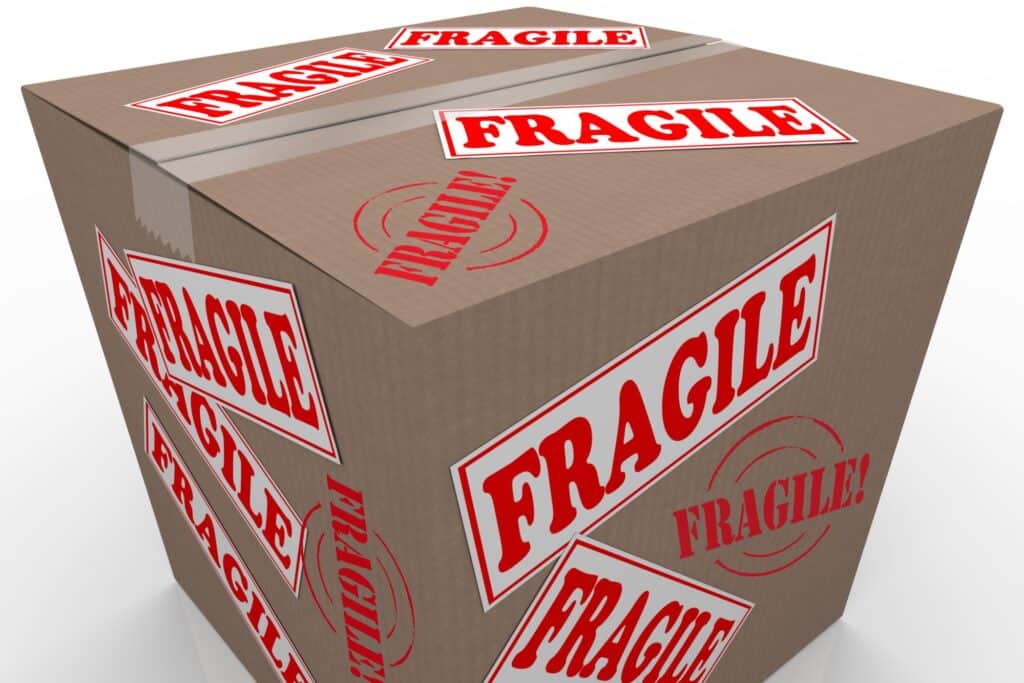
Once your piano is safely wrapped, it’s time to label it. This is the neon sign that signals to anyone handling it that this is no ordinary cargo – it’s fragile and must be treated with the utmost respect. A bold, clear ‘fragile’ label is a universal language that speaks volumes, ensuring that movers proceed with caution.
But labelling goes beyond mere words. It’s about communication and setting expectations. By marking your piano as fragile, you’re informing every mover, every carrier, every person in the chain of its precious cargo status. It’s a reminder that they’re not just moving an object; they’re transporting a vessel of memories, a piece of your personal history that demands extra care and attention.
Moving Large Furniture Items
Transitioning to the realm of furniture, the approach changes slightly but the principle remains the same: protect and transport with care. Moving large furniture pieces like wardrobes and bookshelves can be as tricky as a complicated piano piece if not tackled correctly. Here are some techniques and tools to help you manoeuvre these cumbersome items with the grace of a furniture ballerina.
Disassembling Furniture
The secret to moving large furniture lies in disassembly. By breaking down your furniture into manageable pieces, you transform an unwieldy beast into a puzzle that’s much easier to solve. It’s like arranging a composition into smaller, more playable segments. A bed frame, for example, becomes less intimidating when its components are neatly separated and labelled.
Keep all your screws, bolts, and dowels in a bag marked with the furniture piece they belong to. This is your sheet music for reassembly – without it, putting your furniture back together would be like trying to play a symphony without a conductor. By staying organised, you ensure a standing ovation when your furniture takes its rightful place in your new home.
Protecting Delicate Surfaces
Delicate surfaces on furniture and other fragile objects are like the soft passages in a musical piece – they require a gentle touch. Use bubble wrap and cardboard to safeguard these vulnerable areas from the harsh realities of the move. Think of each layer of protection as a note in a protective melody, cushioning your belongings against the dissonance of scratches and dents.
In addition to wrapping, consider adding corner guards as the crescendo to your protection symphony. They’re like the brass section – strong and impactful – defending against nicks and damage that can occur during the hustle and bustle of moving day. With these protections in place, your furniture will arrive at the new location ready for its next performance.
Reassembly at New Home
The finale of your furniture’s journey is reassembly. This is where attention to detail during disassembly pays off. Before you start, make sure you have all the pieces of the puzzle – from the smallest screw to the largest panel. It’s like tuning your instrument before a recital; ensuring everything is in place for perfect harmony.
Securely fastening each component is the key to a sturdy reassembly. Don’t rush this final step; it’s the encore to your moving symphony. When every nut and bolt is back in its rightful place, and each piece is aligned with precision, your furniture is ready to serve its purpose once again, offering comfort and familiarity in its new setting.
Transporting Electronics and Appliances
Now, let’s switch gears to electronics and appliances. These modern-day necessities also require a concert of their own – a carefully composed packing process that ensures they arrive in tune and ready to perform.
Whether it’s a sleek flat-screen TV or a sturdy refrigerator, here’s how to hit the right notes for a safe transit.
Packing Electrical Goods

The first movement in packing electronics is securing all the cables, cords, and accessories. Use twist ties or packing tape to keep them from becoming tangled messes – the bane of every unpacking experience. Then, wrap each item in layers of packing paper, as if swaddling them in a protective symphony of softness.
Inside the box, create a cushioned nest with towels or extra packing paper to cradle your electronics during their journey. Seal the box with a strong finale of packing tape and mark it as ‘fragile.’ This is the crescendo that ensures your electronics are handled with the care befitting their high-tech sophistication.
Moving a Large Screen TV
Your large screen TV is the prima donna of your electronic ensemble, demanding special attention during a move. Begin by protecting the screen with bubble wrap and soft blankets – a duet of protection. Remember to capture a snapshot of the connections; it’s like keeping a copy of the score, so you can reconnect everything without missing a beat.
For transportation, the original box is the VIP seating for your TV. If it’s no longer available, find a strong, size-appropriate box to serve as a substitute. Securely tape the box and label it ‘fragile’ to ensure that everyone involved in moving this star performer does so with the utmost respect and care.
Handling Heavy Appliances
Heavy appliances carry the bassline in the orchestra of your move. They require a solid foundation and the right tools for a safe transport. Before moving a refrigerator, for instance, defrost and clean it to prevent a watery mess – think of it as clearing the stage before the show.
Ensure the moving truck is equipped with a ramp or hydraulic lift – these are the stagehands that assist in the heavy lifting. By keeping appliances upright and secure during transit, you’re setting the stage for a flawless debut in their new home.
Hiring Professional Movers
When it comes to moving large, fragile objects, such as fine art, hiring professional movers in Harrow can be the difference between a standing ovation and a tragic opera. These seasoned performers bring the strength, equipment, and expertise necessary to handle your valued possessions with the finesse of a first-chair violinist. Whether it’s a grand piano or a delicate glass sculpture, professional movers conduct the process with precision.
Before the curtain rises on moving day, here are some important steps to take:
- Inform the removal company of any oversized or awkward items. This is like rehearsing with the orchestra – ensuring everyone knows their part.
- Check the mover’s insurance to confirm that your belongings are covered in case of an unexpected plot twist.
- Don’t forget to ask for testimonials or references, as previous customers’ experiences can be as telling as reviews of a premiere performance.
Storing Large Fragile Items
Sometimes, there’s an intermission in the moving process, and you need to store your items. For large, fragile objects, a climate-controlled storage unit is like a private dressing room, offering protection from the elements and maintaining the perfect environment for preservation. Whether it’s a musical instrument that could warp or an electronic device that could suffer from temperature extremes, climate-controlled storage is the key to maintaining its integrity.
Think of these units as the conservatories for your valuables. From textiles to wooden furniture, each item is shielded from the damaging effects of too much heat, humidity, or cold. By choosing the right storage conditions, you ensure that your belongings will be ready for their next performance, no matter how long the interlude.
Post-Move Checklist
The move may be over, but your role as the director isn’t. Once the piano is in place and the boxes are unpacked, conduct a thorough inspection of your items. Look for scratches or damage and attend to any tuning that your piano may require – this is the sound check that ensures everything is pitch-perfect for the new setting.
TIP
Leave feedback for the movers, as your review could be the encore that helps them refine their performance for the next customer. Whether it was a solo or a full orchestra move, sharing your experience contributes to the grand symphony of the moving industry.
Summary
As the final note resonates in our guide to moving pianos and large fragile items, remember that the key to a successful move is harmony between preparation, protection, and performance. With the right materials, techniques, and support, your valuables can transition smoothly to their new home. It’s a symphony of steps, each as important as the next, culminating in a crescendo of satisfaction as you settle into your new space.
May this guide serve as your maestro’s baton, conducting you through the complex movements of a house move. Embrace the challenge with confidence, knowing that you are equipped with the knowledge and tips to ensure a standing ovation at the end of your moving journey. Here’s to your next successful move!
Frequently Asked Questions
How much does a piano generally weigh, and how many components does it have?
A piano generally weighs between 300 to 1000 pounds and can have up to 7,000 moving components, making it a significant and complex instrument to transport safely.
What’s the best way to protect my piano during a move?
To protect your piano during a move, make sure to wrap it with padded moving blankets, secure it with heavy-duty packing tape, and label it as ‘fragile’ for careful handling.
Is it necessary to hire professional piano movers, and how do they help?
Yes, it’s necessary to hire professional piano movers because they have the expertise and equipment to move your piano safely and reduce the risk of damage or injury. Hiring experts is the best way to ensure your piano is handled with care and precision.
Can I store my piano in a regular storage unit?
No, it’s not recommended to store a piano in a regular storage unit. It’s better to choose a climate-controlled unit to protect the instrument from temperature and humidity fluctuations.
After moving my piano, is there anything else I need to do before I can play it again?
Yes, after moving your piano, it’s important to check for potential damage and have a technician tune it before playing to ensure the best sound quality.
